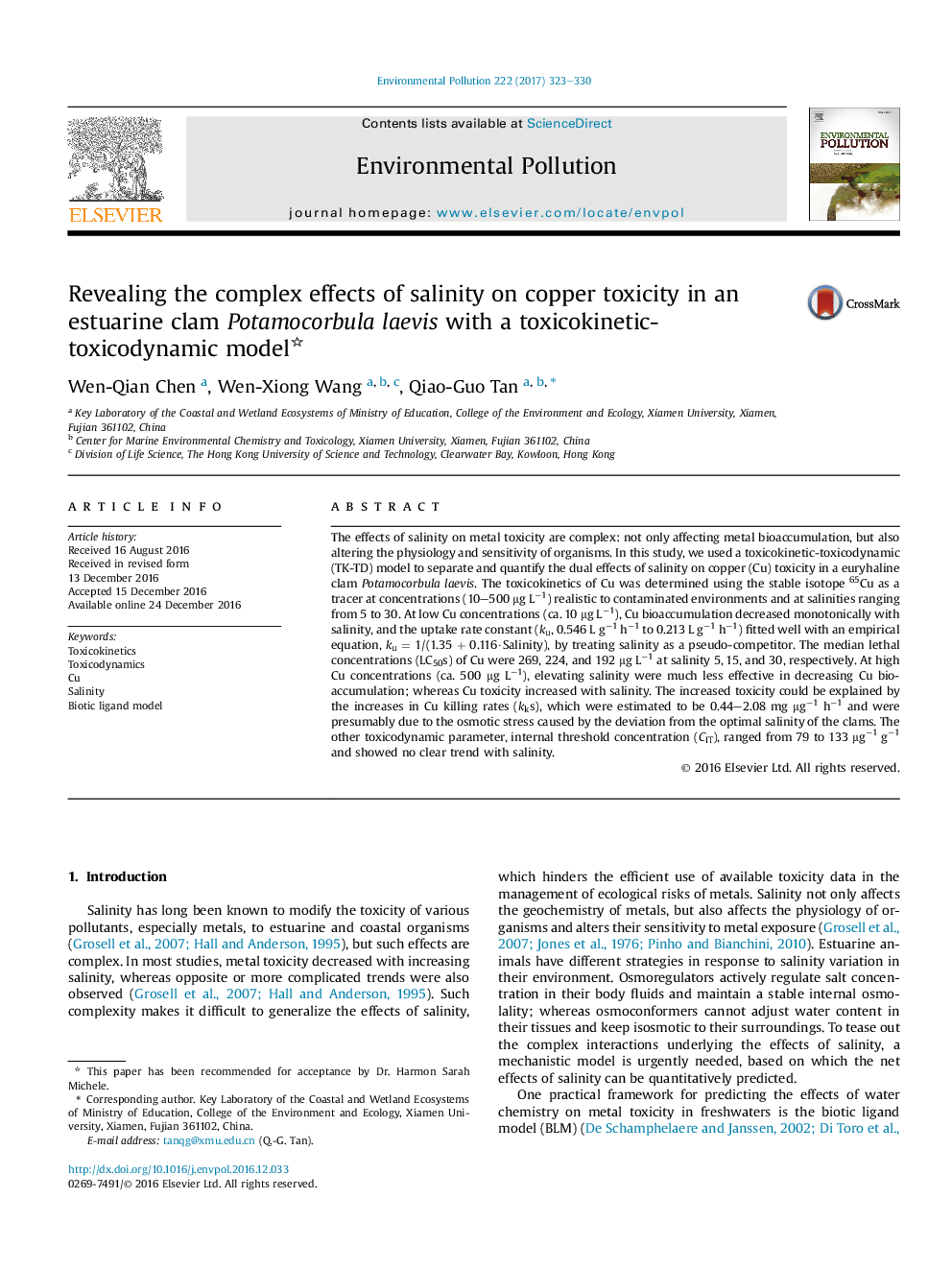| کد مقاله | کد نشریه | سال انتشار | مقاله انگلیسی | نسخه تمام متن |
|---|---|---|---|---|
| 5749026 | 1619151 | 2017 | 8 صفحه PDF | دانلود رایگان |

- The geochemical effects of elevated salinity decrease Cu bioaccumulation.
- The physiological effects of elevated salinity increase Cu toxicity.
- A toxicokinetic-toxicodynamic (TK-TD) model is developed to quantify the dual effects of salinity.
- The biotic ligand model can be integrated into the TD-TK model for predicting salinity effects.
The effects of salinity on metal toxicity are complex: not only affecting metal bioaccumulation, but also altering the physiology and sensitivity of organisms. In this study, we used a toxicokinetic-toxicodynamic (TK-TD) model to separate and quantify the dual effects of salinity on copper (Cu) toxicity in a euryhaline clam Potamocorbula laevis. The toxicokinetics of Cu was determined using the stable isotope 65Cu as a tracer at concentrations (10-500 μg Lâ1) realistic to contaminated environments and at salinities ranging from 5 to 30. At low Cu concentrations (ca. 10 μg Lâ1), Cu bioaccumulation decreased monotonically with salinity, and the uptake rate constant (ku, 0.546 L gâ1 hâ1 to 0.213 L gâ1 hâ1) fitted well with an empirical equation, ku = 1/(1.35 + 0.116·Salinity), by treating salinity as a pseudo-competitor. The median lethal concentrations (LC50s) of Cu were 269, 224, and 192 μg Lâ1 at salinity 5, 15, and 30, respectively. At high Cu concentrations (ca. 500 μg Lâ1), elevating salinity were much less effective in decreasing Cu bioaccumulation; whereas Cu toxicity increased with salinity. The increased toxicity could be explained by the increases in Cu killing rates (kks), which were estimated to be 0.44-2.08 mg μgâ1 hâ1 and were presumably due to the osmotic stress caused by the deviation from the optimal salinity of the clams. The other toxicodynamic parameter, internal threshold concentration (CIT), ranged from 79 to 133 μgâ1 gâ1 and showed no clear trend with salinity.
295
Journal: Environmental Pollution - Volume 222, March 2017, Pages 323-330